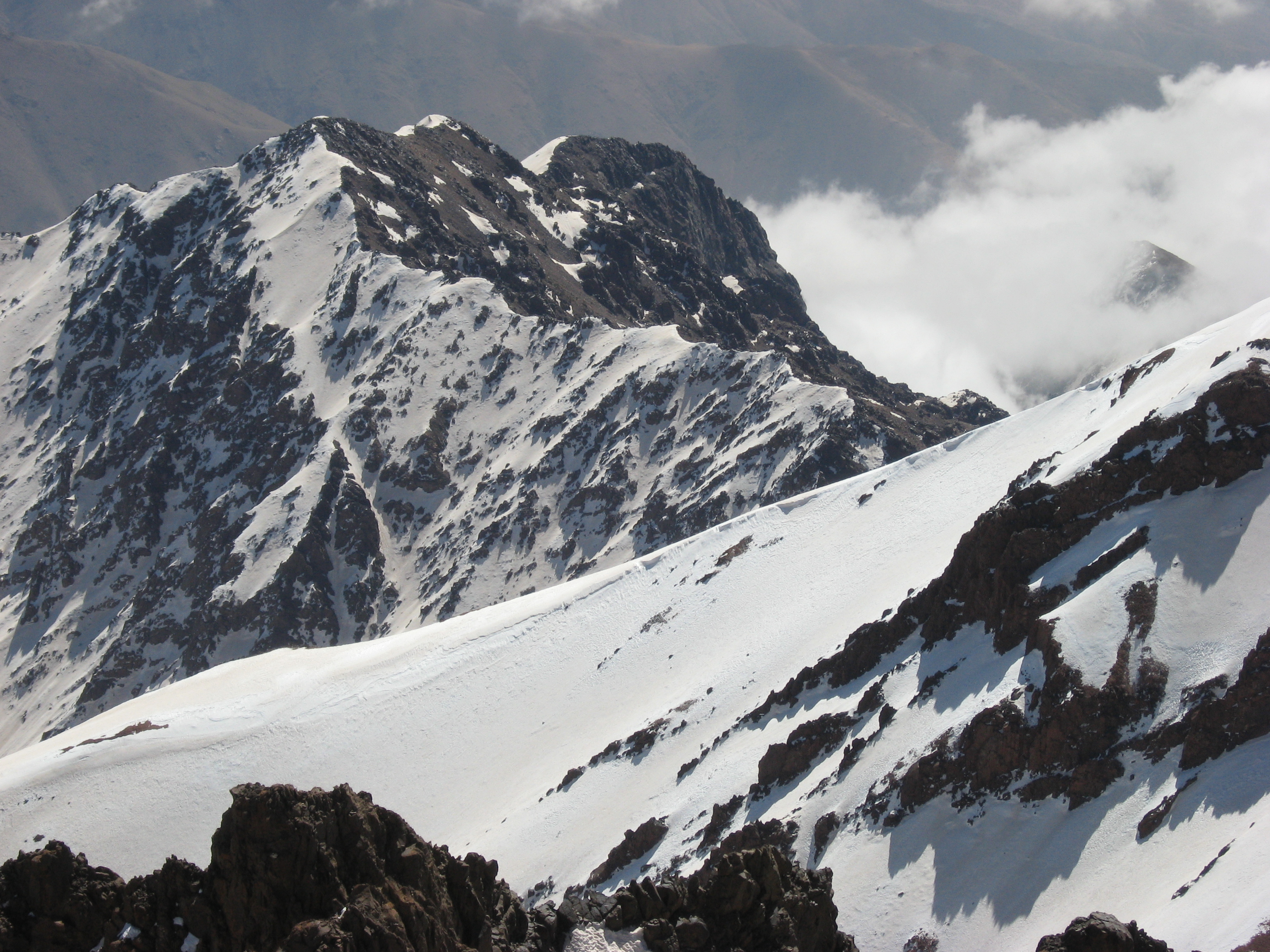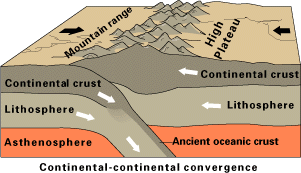|
Atlas Mountains
The Atlas Mountains are a mountain range in the Maghreb in North Africa. They separate the Sahara Desert from the Mediterranean Sea and the Atlantic Ocean; the name "Atlantic" is derived from the mountain range, which stretches around through Morocco, Algeria and Tunisia. The mountains are associated with the Greek god Atlas (mythology), Atlas. The range's highest peak is Toubkal, which is in central Morocco, with an elevation of . The Atlas Mountains are primarily inhabited by Berbers, Berber populations. The terms for 'mountain' are ''Adrar'' and ''adras'' in some Berber languages, and these terms are believed to be cognates of the Toponymy, toponym ''Atlas''. The mountains are home to a number of animals and plants which are mostly found within Africa but some of which can be found in Europe. Many of these species are endangered and a few are already extinct. The weather is generally cool but summers are sunny, and the average temperature there is 25 °C. The Atlas Moun ... [...More Info...] [...Related Items...] OR: [Wikipedia] [Google] [Baidu] |
Jebel Toubkal
Toubkal (, ), also Jbel Toubkal or Jebel Toubkal, is a mountain in central Morocco, located in the Toubkal National Park. At , it is the highest peak in Morocco, the Atlas Mountains, North Africa and the Arab world. Located south of the city of Marrakesh, and visible from it, Toubkal is an ultra prominent peak, the highest for over . Toubkal is ranked 27th by topographic isolation. Geography Although much of the High Atlas consists of sedimentary rocks, the Toubkal massif is an area of volcanic rocks which have weathered into alpine crests, cut by deep, narrow valleys. To the south, the mountain drops steeply down for to a small lake called Lac d'Ifni. To the west, the mountain's edge is marked by a pass, the Tizi n'Ouanoums at . From this pass, the mountain's W-S-W ridge rises up to Toubkal West, which forms a shoulder at before continuing to the summit at . The north and western sides of Toubkal drain down to the Mizane Valley, which has the passes of both Tizi n'Ouanoums a ... [...More Info...] [...Related Items...] OR: [Wikipedia] [Google] [Baidu] |
Berber Languages
The Berber languages, also known as the Amazigh languages or Tamazight, are a branch of the Afroasiatic language family. They comprise a group of closely related but mostly mutually unintelligible languages spoken by Berbers, Berber communities, who are indigenous to North Africa.Hayward, Richard J., chapter ''Afroasiatic'' in Heine, Bernd & Nurse, Derek, editors, ''African Languages: An Introduction'' Cambridge 2000. . The languages are primarily spoken and not typically written. Historically, they have been written with the ancient Libyco-Berber script, which now exists in the form of Tifinagh. Today, they may also be written in the Berber Latin alphabet or the Arabic script, with Latin being the most pervasive. The Berber languages have a similar level of variety to the Romance languages, although they are sometimes referred to as a single collective language, often as "Berber", "Tamazight", or "Amazigh". The languages, with a few exceptions, form a dialect continuum. There is ... [...More Info...] [...Related Items...] OR: [Wikipedia] [Google] [Baidu] |
North America
North America is a continent in the Northern Hemisphere, Northern and Western Hemisphere, Western hemispheres. North America is bordered to the north by the Arctic Ocean, to the east by the Atlantic Ocean, to the southeast by South America and the Caribbean Sea, and to the south and west by the Pacific Ocean. The region includes Middle America (Americas), Middle America (comprising the Caribbean, Central America, and Mexico) and Northern America. North America covers an area of about , representing approximately 16.5% of Earth's land area and 4.8% of its total surface area. It is the third-largest continent by size after Asia and Africa, and the list of continents and continental subregions by population, fourth-largest continent by population after Asia, Africa, and Europe. , North America's population was estimated as over 592 million people in list of sovereign states and dependent territories in North America, 23 independent states, or about 7.5% of the world's popula ... [...More Info...] [...Related Items...] OR: [Wikipedia] [Google] [Baidu] |
Continental Collision
In geology, continental collision is a phenomenon of plate tectonics that occurs at Convergent boundary, convergent boundaries. Continental collision is a variation on the fundamental process of subduction, whereby the subduction zone is destroyed, mountains produced, and two continents sutured together. Continental collision is only known to occur on Earth. Continental collision is not an instantaneous event, but may take several tens of millions of years before the Geologic fault, faulting and Fold (geology), folding caused by collisions stops. Geology of the Himalaya, The collision between Indian plate, India and Eurasian plate, Asia has been going on for about 50 million years already and shows no signs of abating. Collision between East and West Gondwana to form the East African Orogeny, East African Orogen took about 100 million years from beginning (610 Ma) to end (510 Ma). The collision between Gondwana and Laurasia to form Pangea occurred in a relati ... [...More Info...] [...Related Items...] OR: [Wikipedia] [Google] [Baidu] |
Paleozoic
The Paleozoic ( , , ; or Palaeozoic) Era is the first of three Era (geology), geological eras of the Phanerozoic Eon. Beginning 538.8 million years ago (Ma), it succeeds the Neoproterozoic (the last era of the Proterozoic Eon) and ends 251.9 Ma at the start of the Mesozoic Era. The Paleozoic is subdivided into six period (geology), geologic periods (from oldest to youngest), Cambrian, Ordovician, Silurian, Devonian, Carboniferous and Permian. Some geological timescales divide the Paleozoic informally into early and late sub-eras: the Early Paleozoic consisting of the Cambrian, Ordovician and Silurian; the Late Paleozoic consisting of the Devonian, Carboniferous and Permian. The name ''Paleozoic'' was first used by Adam Sedgwick (1785–1873) in 1838 to describe the Cambrian and Ordovician periods. It was redefined by John Phillips (geologist), John Phillips (1800–1874) in 1840 to cover the Cambrian to Permian periods. It is derived from the Ancient Greek, Greek ''palaiós'' (π� ... [...More Info...] [...Related Items...] OR: [Wikipedia] [Google] [Baidu] |
Anti-Atlas
The Anti-Atlas, also known as Lesser Atlas or Little Atlas, is a mountain range in Morocco, a part of the Atlas Mountains in the northwest of Africa. The Anti-Atlas extends from the Atlantic Ocean in the southwest toward the northeast, to the heights of Ouarzazate and further east to the city of Tafilalt, altogether a distance of approximately 500 km. The range borders on the Sahara to the south."Anti-Atlas" (or Jebel Saghru), ''The Encyclopædia Britannica'', 1910. In some contexts, the Anti-Atlas is considered separate from the Atlas Mountains system, as the prefix "anti" (i.e. opposite) implies. Geography The summits of the Anti-Atlas reach average heights of , with a few peaks reaching higher. To the north lies a plateau at 1700–1800 m in height. To the south lie the Sahara highlands at approximately 700 m. On the heights of Ouarzazate, the massif is cut through by the Draa valley, opening towards the south. The range is strongly fissured, particularly in a sout ... [...More Info...] [...Related Items...] OR: [Wikipedia] [Google] [Baidu] |
Supereon
The Precambrian ( ; or pre-Cambrian, sometimes abbreviated pC, or Cryptozoic) is the earliest part of Earth's history, set before the current Phanerozoic Eon. The Precambrian is so named because it preceded the Cambrian, the first period of the Phanerozoic Eon, which is named after Cambria, the Latinized name for Wales, where rocks from this age were first studied. The Precambrian accounts for 88% of the Earth's geologic time. The Precambrian is an informal unit of geologic time, subdivided into three eons (Hadean, Archean, Proterozoic) of the geologic time scale. It spans from the formation of Earth about 4.6 billion years ago ( Ga) to the beginning of the Cambrian Period, about million years ago ( Ma), when hard-shelled creatures first appeared in abundance. Overview Relatively little is known about the Precambrian, despite it making up roughly seven-eighths of the Earth's history, and what is known has largely been discovered from the 1960s onwards. The Precambrian fossil ... [...More Info...] [...Related Items...] OR: [Wikipedia] [Google] [Baidu] |
Basement Rock
In geology, basement and crystalline basement are crystalline rocks lying above the mantle and beneath all other rocks and sediments. They are sometimes exposed at the surface, but often they are buried under miles of rock and sediment. The basement rocks lie below a sedimentary platform or cover, or more generally any rock below sedimentary rocks or sedimentary basins that are metamorphic or igneous in origin. In the same way, the sediments or sedimentary rocks on top of the basement can be called a "cover" or "sedimentary cover". Basement rock consists of continental crustal rock which has been modified several times through tectonic events including deformation, metamorphism, deposition, partial melting and magmatism. Continental crust Basement rock is the thick foundation of ancient, and oldest, metamorphic and igneous rock that forms the crust of continents, often in the form of granite. Basement rock is contrasted to overlying sedimentary rocks which are laid down on top ... [...More Info...] [...Related Items...] OR: [Wikipedia] [Google] [Baidu] |
Extinct
Extinction is the termination of an organism by the death of its Endling, last member. A taxon may become Functional extinction, functionally extinct before the death of its last member if it loses the capacity to Reproduction, reproduce and recover. As a species' potential Range (biology), range may be very large, determining this moment is difficult, and is usually done retrospectively. This difficulty leads to phenomena such as Lazarus taxon, Lazarus taxa, where a species presumed extinct abruptly "reappears" (typically in the Fossil, fossil record) after a period of apparent absence. Over five billion species are estimated to have died out. It is estimated that there are currently around 8.7 million species of eukaryotes globally, possibly many times more if microorganisms are included. Notable extinct animal species include Dinosaur, non-avian dinosaurs, Machairodontinae, saber-toothed cats, and mammoths. Through evolution, species arise through the process of specia ... [...More Info...] [...Related Items...] OR: [Wikipedia] [Google] [Baidu] |
Endangered
An endangered species is a species that is very likely to become extinct in the near future, either worldwide or in a particular political jurisdiction. Endangered species may be at risk due to factors such as habitat loss, poaching, invasive species, and climate change. The International Union for Conservation of Nature (IUCN) Red List lists the global conservation status of many species, and various other agencies assess the status of species within particular areas. Many nations have laws that protect conservation-reliant species which, for example, forbid hunting, restrict land development, or create protected areas. Some endangered species are the target of extensive conservation efforts such as captive breeding and habitat restoration. Human activity is a significant cause in causing some species to become endangered. Conservation status The conservation status of a species indicates the likelihood that it will become extinct. Multiple factors are c ... [...More Info...] [...Related Items...] OR: [Wikipedia] [Google] [Baidu] |
Plant
Plants are the eukaryotes that form the Kingdom (biology), kingdom Plantae; they are predominantly Photosynthesis, photosynthetic. This means that they obtain their energy from sunlight, using chloroplasts derived from endosymbiosis with cyanobacteria to produce sugars from carbon dioxide and water, using the green pigment chlorophyll. Exceptions are parasitic plants that have lost the genes for chlorophyll and photosynthesis, and obtain their energy from other plants or fungi. Most plants are multicellular organism, multicellular, except for some green algae. Historically, as in Aristotle's biology, the plant kingdom encompassed all living things that were not animals, and included algae and fungi. Definitions have narrowed since then; current definitions exclude fungi and some of the algae. By the definition used in this article, plants form the clade Viridiplantae (green plants), which consists of the green algae and the embryophytes or land plants (hornworts, liverworts ... [...More Info...] [...Related Items...] OR: [Wikipedia] [Google] [Baidu] |








